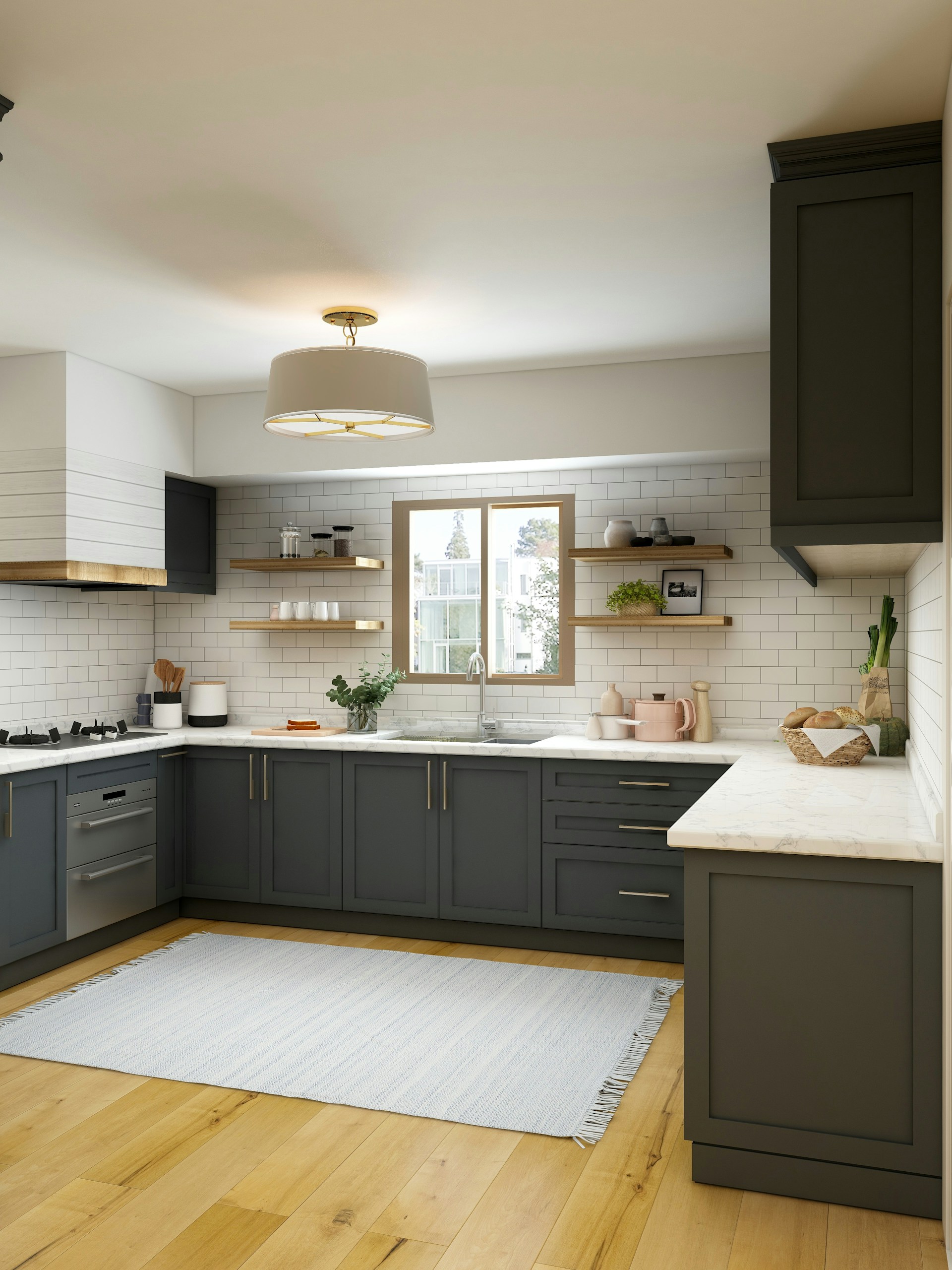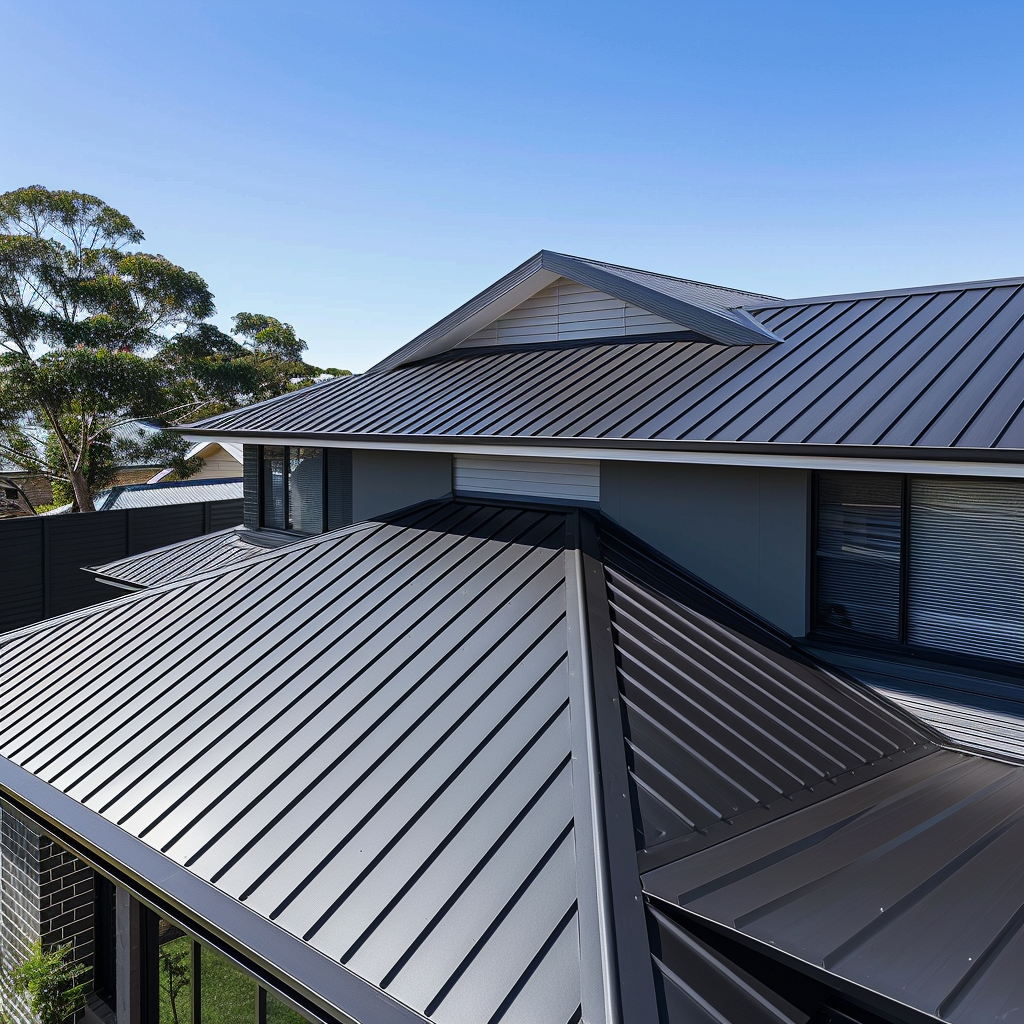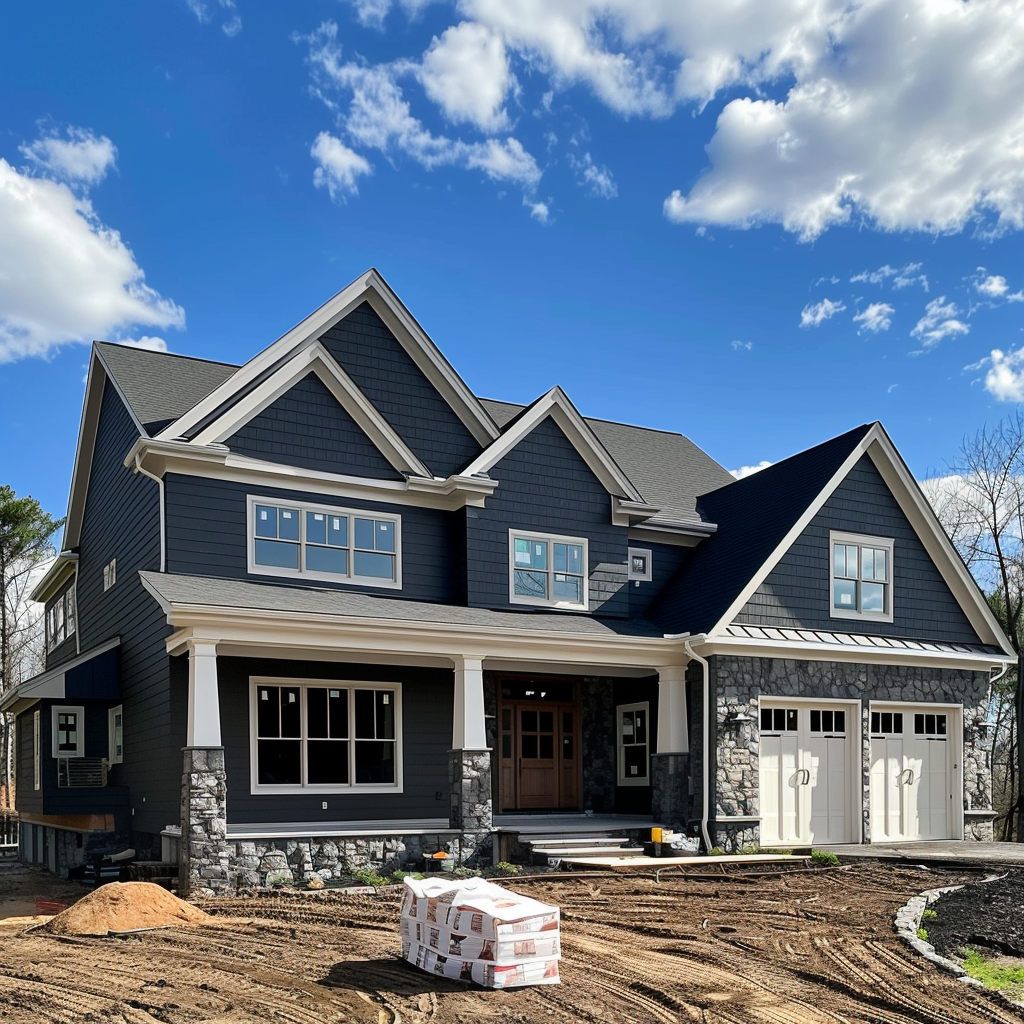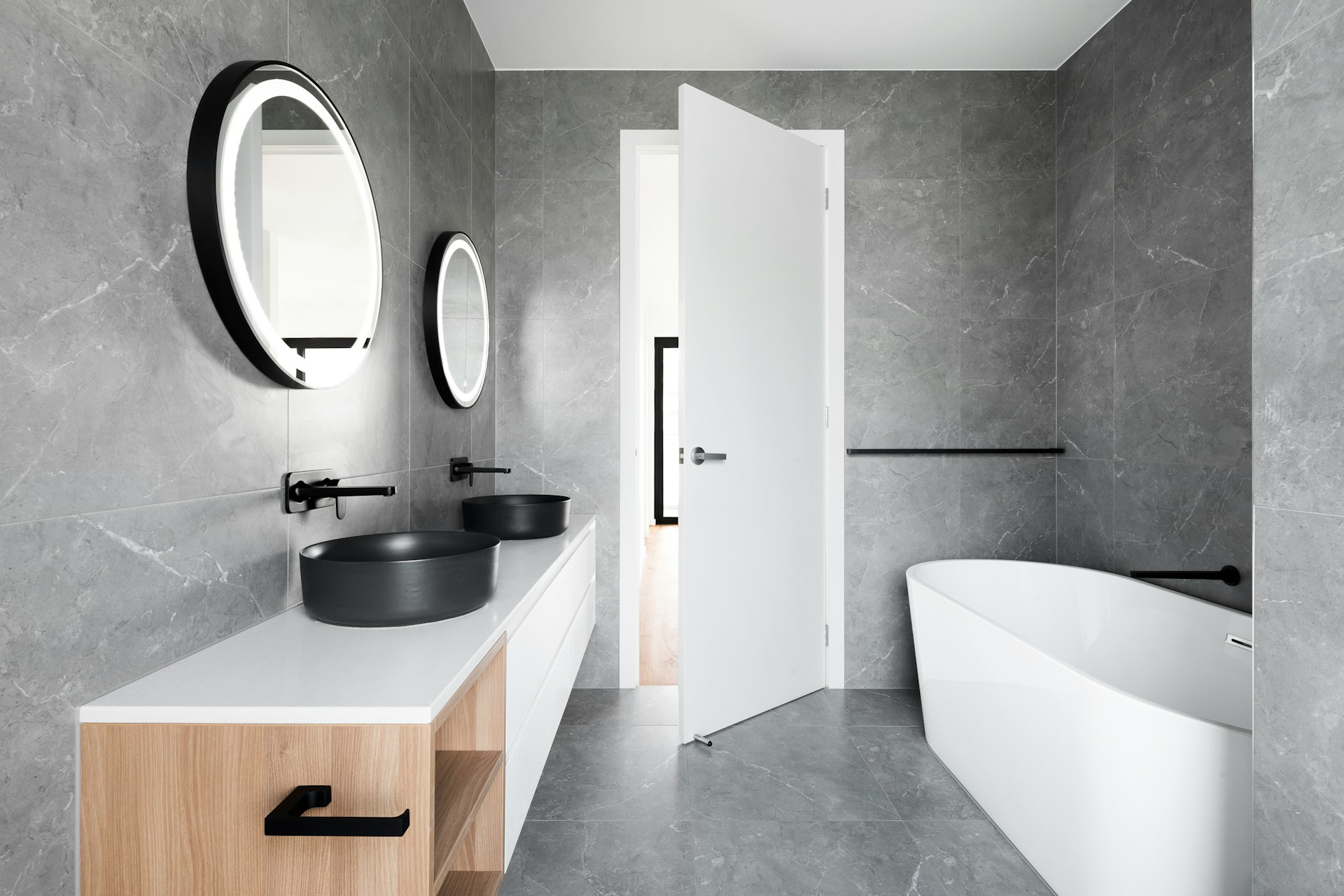
LANDCONNECT — 28 March 2024
Choosing the Perfect Kitchen Benchtop: A Comprehensive Guide
How to choose the perfect kitchen benchtop
Kitchens, the epicenter of our homes, are defined by their benchtops. These surfaces are not just for chopping and dicing; they represent our style, our culinary aspirations, and our way of life. In this comprehensive guide, we’ll explore various kitchen benchtop options, each with its unique charm and functionality. Our aim? To arm you with the knowledge to select a benchtop that resonates with your lifestyle and aesthetics.
Kitchen Benchtops Overview
When it comes to kitchen benchtops, the choices can be overwhelming. But it’s more than just picking a material; it’s about understanding the heart of your kitchen. A benchtop must withstand the daily hustle, harmonize with your kitchen’s design, and align with your budget and maintenance preferences. It’s a delicate balance between practicality and style. In this section, we delve into what makes a benchtop not just good, but great, for your specific needs.
Key Considerations:
- Durability: Ability to resist wear and tear.
- Maintenance: Required upkeep to retain appearance.
- Aesthetics: How it complements your kitchen’s theme.
- Cost: Budget considerations.
- Functionality: Suitability for your cooking habits and lifestyle.
Stone Bench Tops
Stone benchtops are synonymous with luxury and elegance. Imagine a beautifully veined slab of marble or the rugged charm of granite. These natural materials bring a slice of the outdoors into your home. But with beauty comes responsibility. Stone surfaces require regular maintenance and can be on the pricier side. They are ideal for those who value unique aesthetics and are ready to invest in their preservation. In a kitchen where style is paramount, stone benchtops are a statement piece, offering a blend of durability and natural elegance.
Features at a Glance:
- Natural Patterns: Each piece is unique.
- Heat Resistance: Generally high.
- Scratch and Stain Resistance: Varies by type; some require sealing.
- Cost Range: High, reflecting the natural material’s uniqueness.
- Maintenance Level: Regular sealing and careful cleaning required.
- Ideal For: Style-focused homeowners willing to invest in maintenance.
Laminate Bench Tops
Laminate benchtops are the unsung heroes of the budget-friendly kitchen remodels. They offer versatility in design and a surprisingly chic look at a fraction of the cost of other materials. Today’s laminates are far from their humble beginnings, now boasting durability and an array of styles mimicking wood, stone, and even metal. However, they aren’t invincible; they can succumb to scratches and aren’t fans of high heat. Laminate benchtops are perfect for those who seek style and practicality without breaking the bank.
Key Points:
- Design Options: Wide range, from realistic wood grains to modern patterns.
- Durability: Good, but susceptible to scratches and heat damage.
- Maintenance: Low; easy to clean and maintain.
- Cost: Budget-friendly.
- Ideal For: Cost-conscious consumers looking for style and functionality.
Engineered Stone Bench Tops
Engineered stone benchtops are the modern alchemy of design – a mix of quartz and resins that result in a surface both hardy and glamorous. These benchtops offer the elegance of stone with enhanced durability. They’re resistant to scratches, stains, and even the chaos of a busy kitchen. The consistency in pattern and color makes them a favorite for those seeking uniformity in design. However, they aren’t completely impervious to damage, particularly from extreme heat. Engineered stone is ideal for those who love the stone’s look but desire more uniformity and resilience.
Highlights:
- Material Composition: Quartz mixed with resins.
- Durability: High, resistant to scratches and stains.
- Heat Resistance: Moderate; can be damaged by high heat.
- Maintenance: Easy to clean; no sealing required.
- Cost Range: Mid to high.
- Ideal For: Homeowners seeking a balance of beauty, durability, and consistent design.
Timber Bench Tops
Timber benchtops bring warmth and character to a kitchen like no other material can. Each piece tells a story, with its grain patterns and natural hues. Timber requires a bit of love and care to maintain its beauty – regular oiling and gentle cleaning are a must. It’s not as hardy against heat or moisture as other materials, but for those who cherish the organic, evolving beauty of wood, it’s a match made in kitchen heaven.
Timber Traits:
- Aesthetic Quality: Warm, natural, unique grain patterns.
- Heat Resistance: Low; prone to damage from hot items.
- Maintenance: Regular oiling and careful cleaning needed.
- Durability: Moderate; can be susceptible to scratches and water damage.
- Cost Range: Varies widely based on wood type.
- Ideal For: Those who appreciate natural materials and are committed to upkeep.
Porcelain Bench Tops
Porcelain benchtops are the new kids on the block, offering a sleek, modern look with impressive functionality. They’re born from high-temperature kiln-firing, resulting in a surface that laughs in the face of heat, scratches, and stains. Porcelain can mimic the look of marble, stone, or wood, offering versatility in design. It’s a dream for minimalists and contemporary design lovers – low maintenance, high durability, and a clean, crisp aesthetic.
Porcelain Perks:
- Heat and Stain Resistance: Extremely high.
- Scratch Resistance: Excellent.
- Maintenance: Low; easy to clean.
- Aesthetic Variety: Wide range, including mimicry of other materials.
- Cost: Mid to high range.
- Ideal For: Modern kitchens and those seeking durability with minimal maintenance.
Marble Bench Tops
Marble benchtops are the epitome of luxury. Their distinctive veining and soft luminescence have made them a favorite in high-end kitchens. However, marble is like high-maintenance royalty – beautiful but demanding. It’s prone to staining, scratching, and requires regular sealing. Marble is for those who see their kitchen as a masterpiece, a space where the beauty of the material speaks louder than the practicalities.
Marble Matters:
- Aesthetic Appeal: High-end, unique veining.
- Durability: Moderate; susceptible to scratching and staining.
- Maintenance: High; requires regular sealing and careful cleaning.
- Cost: Premium.
- Ideal For: Luxury kitchens where aesthetics are a priority.
Granite Kitchen Bench Tops
Granite benchtops bring a piece of nature’s art into your kitchen. Each slab is unique, durable, and adds value to your home. Granite stands up well to heat, scratches, and everyday use, but like any natural stone, it needs periodic sealing to resist stains. It’s a perfect choice for those who love the natural stone look but want something a bit more forgiving than marble.
Granite Insights:
- Unique Patterns: Each slab is distinctive.
- Durability: High; resistant to heat and scratches.
- Maintenance: Periodic sealing required.
- Cost Range: Mid to high.
- Ideal For: Those seeking a balance of natural beauty and durability.
Stainless Steel Bench Tops
Stainless steel benchtops scream professional kitchen. They’re the workhorses of the culinary world – tough, heat-resistant, and hygienic. While they may show fingerprints and can dent, their industrial look and practicality make them a favorite in modern, minimalist kitchens. If you’re after a sleek, professional look with top-notch durability, stainless steel is your go-to.
Steel Specs:
- Industrial Aesthetic: Sleek, professional look.
- Durability: High; resistant to heat and bacteria.
- Maintenance: Easy to clean but shows fingerprints.
- Cost: Mid-range.
- Ideal For: Modern, minimalist kitchens with heavy use.
Outdoor Kitchen Bench Tops
Outdoor kitchen benchtops face challenges that their indoor counterparts don’t – weather, UV exposure, and more. Materials like granite, concrete, and high-grade stainless steel stand up best in these environments. They must withstand temperature fluctuations, moisture, and sunlight without losing their charm. Choosing a benchtop for an outdoor kitchen is about finding the right balance between resilience and style, ensuring your outdoor culinary space remains both functional and inviting.
Outdoor Considerations:
- Material Durability: Must withstand weather and UV exposure.
- Maintenance: Higher, due to exposure to elements.
- Design Compatibility: Should complement outdoor aesthetics.
- Cost Range: Varies based on material.
- Ideal Materials: Granite, concrete, high-grade stainless steel.
Replacing Kitchen Bench Tops
Replacing a kitchen benchtop can transform your space, but it’s not a decision to be taken lightly. Consider factors like durability, maintenance, cost, and how the new material will mesh with your existing kitchen design. It’s a chance to upgrade not just in style but in functionality, making your kitchen more aligned with your lifestyle.
Replacement Tips:
- Assess Current Layout: Compatibility with existing kitchen elements.
- Budget: Consider costs beyond the material, like installation.
- Functionality: Choose a material that suits your cooking habits.
- Design Harmony: Ensure the new benchtop complements your kitchen’s theme.
Bench Top Thickness Suggestions
The thickness of your kitchen benchtop significantly influences both its appearance and functionality. With standard options typically ranging from 20mm to 40mm, the choice you make can drastically affect the look and feel of your kitchen. Thicker benchtops, often seen in more luxurious or statement designs, bring a sense of solidity and grandeur to a space.
On the other hand, thinner benchtops lend a sleek and modern aesthetic, ideal for contemporary kitchen styles. When deciding on the thickness, it’s important to consider the overall design vision for your kitchen and ensure that the chosen thickness complements both the visual appeal and practical usability of your space.
Thickness Guide:
- Standard Thicknesses: 20mm, 30mm, 40mm.
- Design Impact: Thicker tops for bold statements; thinner for modern minimalism.
- Functionality: Ensure thickness doesn’t impede practical use.
- Compatibility: Match with kitchen cabinets and overall style.
Environmental Impact and Sustainability
Exploring the Green Footprint of Benchtop Materials
As we pivot towards a more environmentally conscious world, the echo of our choices resonates louder than ever—especially when it comes to outfitting the heart of our homes. Selecting a kitchen benchtop with a keen eye on its environmental impact not only speaks volumes about our commitment to the planet but also shapes the sustainability narrative of our spaces.
From the high demands of mining granite to the gentler carbon footprint of using recycled materials, each benchtop material tells a different story of ecological impact. Let’s dive into a comparative look at these materials, assessing everything from their birth in the wild or factory to their potential rebirth through recycling.
This exploration aims to illuminate the path to making choices that harmonize with our environmental ethos, whether it’s opting for materials like stainless steel, known for its recyclability, or steering towards timber and porcelain, which offer a promise of renewal and longevity.
Sustainability Comparison:
- Stone: Mining impact, limited recyclability.
- Laminate: Often non-recyclable, but some eco-friendly options available.
- Engineered Stone: Energy-intensive manufacturing, low recyclability.
- Timber: Renewable if sustainably sourced; biodegradable.
- Porcelain: Long lifespan, recyclable.
- Outdoor Materials: Varies; natural stone and recycled options are more sustainable.
- Marble/Granite: High energy mining, moderate to low recyclability.
- Stainless Steel: Highly recyclable, durable.
- Considerations: Resource extraction, manufacturing energy, end-of-life disposal.
Installation Insights
Navigating the Complexities of Benchtop Installation
Diving into the installation of a kitchen benchtop reveals a landscape filled with diverse challenges and considerations, shaped largely by the choice of material. The heft of granite necessitates robust support structures, while the installation of engineered stone requires meticulous care to avoid any mishaps like cracking. In contrast, laminate and timber are somewhat more lenient, often proving to be good candidates for those with DIY aspirations.
The journey doesn’t end there; integrating sinks, particularly under-mount options, and appliances adds another layer of complexity. Given these varied requirements, professional installation emerges as a wise choice for ensuring the longevity and safety of most benchtop materials, from the unwieldy weight of stone to the fragile elegance of porcelain.
Installation Challenges:
- Stone/Engineered Stone: Requires professional installation, heavy, precision needed.
- Laminate: Easier, DIY-friendly, less precision required.
- Timber: Moderate difficulty, potential for DIY.
- Porcelain: Professional installation recommended, brittle material.
- Outdoor Materials: Consider weatherproofing, professional installation for heavy materials.
- Marble/Granite: Need strong support, professional installation.
- Stainless Steel: Professional installation for seamless integration.
- Key Factors: Weight, precision, integration with other kitchen elements.
Color and Texture Trends
Staying Ahead with Current Benchtop Trends
Navigating the ever-evolving world of kitchen benchtop colors and textures is like keeping up with the latest fashion trends—what’s in today might be out tomorrow. Yet, some styles have the staying power of a classic little black dress.
Currently, we’re seeing a surge in the love for engineered stone benchtops that boast veined patterns, beautifully emulating the timeless elegance of natural marble.
Meanwhile, the down-to-earth vibe of timber in farmhouse kitchens continues to warm hearts, and the sleek allure of matte finishes in laminate and porcelain is on the rise, painting a picture of modern sophistication.
While neutral tones stand their ground for their versatile charm, bold colors are stepping into the spotlight, ready to make a statement. Understanding these trends is key to crafting a kitchen space that’s not just a reflection of the times but also a personal haven that speaks to your unique style.
Trend Snapshot:
- Stone/Engineered Stone: Veined patterns, matte finishes.
- Laminate: Bold colors, high-gloss, and matte finishes.
- Timber: Rustic look, natural finishes.
- Porcelain: Large-format tiles, matte and polished finishes.
- Outdoor Materials: Natural, rugged looks.
- Marble/Granite: Classic veining, polished finish.
- Stainless Steel: Brushed and matte finishes.
- Popular Trends: Neutral tones, matte finishes, veined patterns.
Benchtop Edge Styles
Defining Your Kitchen’s Character through Edge Design
Think of your kitchen benchtop edge as the cherry on top of your culinary sanctuary. This isn’t just a line where the countertop meets the air; it’s an opportunity to infuse style and character into your space. Straight and beveled edges whisper sleekness and modernity, making a statement of simplicity and sophistication.
For a sprinkle of traditional charm and safety (because, let’s face it, sharp corners and toddlers mix about as well as oil and water), the rounded grace of a bullnose edge is your go-to. And if your kitchen were a drama, the ogee edge would be its most intricate plot twist, offering layers of elegance.
Then there’s the mitred edge, the epitome of contemporary cool, thickening the plot—and your countertop’s profile. Navigating through these choices is more than a design decision; it’s about matching your kitchen’s personality with your practical realities, from aesthetics to the ease of wiping down those inevitable spills.
Edge Style Options:
- Straight/Bevel: Modern, clean; suits most materials.
- Bullnose: Rounded, safe for kids; timeless appeal.
- Ogee: Elegant, intricate; ideal for traditional designs.
- Mitred: Creates a thick appearance; contemporary.
- Factors to Consider: Aesthetics, safety, cleaning ease, material compatibility.
Undermount vs. Overmount Sinks with Benchtops
Integrating Sinks with Style and Function
Choosing between undermount and overmount sinks is a critical decision that affects both the aesthetics and functionality of your kitchen benchtop. Undermount sinks create a sleek, continuous line, making cleanup a breeze as debris can be swept directly into the sink without catching on a lip. However, they necessitate the use of waterproof benchtop materials, such as granite or engineered stone, to prevent damage from moisture. Overmount sinks, conversely, are known for their adaptability and simpler installation process. They’re compatible with a wide range of benchtop materials but might interrupt the smooth surface of your counter. This choice hinges on various factors, including the type of benchtop material you prefer, how much you value ease of cleaning, and the specific installation requirements of your kitchen design.
Sink Integration Comparison:
- Undermount Sinks: Seamless, easy to clean; requires waterproof materials.
- Overmount Sinks: Versatile, easier installation; disrupts counter flow.
- Material Suitability: Varies; some materials favor undermount for aesthetics.
- Considerations: Benchtop material, ease of cleaning, installation requirements.
Heat and Scratch Repair Techniques
Maintaining the Beauty of Your Benchtop
Kitchen benchtops are bound to encounter some battle scars from heat damage or scratches over their lifetime. For each material, there are specific methods to repair and minimize these signs of wear, ensuring your benchtop retains its beauty. For example, buffing can often diminish minor scratches on stainless steel surfaces, while timber may require sanding and resealing to address heat marks. Familiarity with these repair techniques is crucial for maintaining the longevity and aesthetic appeal of your benchtop.
Repair Tips:
- Stone/Engineered Stone: Professional repair for severe damage; DIY kits for minor issues.
- Laminate: Difficult to repair; replacement often necessary.
- Timber: Sanding and resealing for scratches; heat damage more challenging.
- Porcelain: Resistant to damage; professional repair for chips or cracks.
- Stainless Steel: Buffing and polishing for minor scratches.
- Key Strategies: Prevention, regular maintenance, timely repairs.
Comparative Lifespan
Investing in Longevity: Benchtop Durability Over Time
When selecting a kitchen benchtop, longevity is not just a detail—it’s a cornerstone of your decision-making process. This isn’t merely about aesthetics or the initial wow factor; it’s an investment in the future of your kitchen. Granite and stainless steel stand as testaments to durability, potentially serving you well for generations with the right care. Conversely, options like laminate and timber, though rich in character and warmth, might call for a more frequent refresh. Understanding the lifespan of each material under everyday kitchen scenarios enables a more informed, cost-effective choice, ensuring your benchtop is as enduring as your culinary passion.
Lifespan Overview:
- Stone/Engineered Stone: Decades with proper care.
- Laminate: 10-15 years, depending on use and maintenance.
- Timber: Varies; can be decades with regular upkeep.
- Porcelain: Extremely durable; can last decades.
- Stainless Steel: Lifelong durability with proper maintenance.
- Considerations: Usage patterns, maintenance commitment, potential for refurbishment.
Safety and Health Considerations
Ensuring a Healthy and Safe Kitchen Environment
Let’s not kid ourselves—picking the right kitchen benchtop goes beyond what meets the eye. Sure, you want that magazine-worthy look, but what about the unseen hazards? We’re diving deep into what it really means to choose a benchtop that’s safe for you and your avocado toasts. From sneaky radon emissions lurking in the veins of that chic natural stone to making sure your sealants aren’t off-gassing a chemistry set, this isn’t just about aesthetics. It’s about making sure your stainless steel shines not just because it’s clean, but because it’s keeping your kitchen’s bacteria count lower than your stress levels on a spa day. And for those eyeing porous beauties like marble, remember, they require a love and care routine that rivals your skincare regime to stay pristine and germ-free.
Health and Safety Factors:
- Stone: Radon emissions consideration; sealing for hygiene.
- Laminate/Engineered Stone: Use of non-toxic, low-VOC sealants and adhesives.
- Timber: Regular sealing to prevent bacteria growth.
- Porcelain/Stainless Steel: Non-porous, hygienic surfaces.
- Key Aspects: Material emissions, hygiene maintenance, safe use practices
Compatibility with Kitchen Appliances
Harmonizing Benchtops with Kitchen Equipment
The aesthetic cohesion between your benchtop and kitchen appliances is a subtle but significant aspect of kitchen design.
Whether you have stainless steel appliances, which pair well with sleek, modern surfaces, or classic white goods better suited to natural materials, this segment will help you create a harmonious kitchen environment.
Matching Tips:
- Modern Appliances: Complement with engineered stone, stainless steel, or porcelain.
- Classic/White Appliances: Pair well with timber, marble, or granite.
- Considerations: Color matching, style continuity, material contrast.
- Design Strategy: Balance between matching and contrasting for aesthetic harmony.
Benchtop Quick Comparison Guide
| Feature/ Material | Stone | Laminate | Engineered Stone | Timber | Porcelain | Outdoor | Marble | Granite | Stainless Steel |
| Aesthetic Variety | High | Very High | High | High | High | Moderate | High | High | Low |
| Durability | Moderate-High | Moderate | High | Moderate | Very High | High | Moderate | High | Very High |
| Heat Resistance | High | Low | Moderate | Low | Very High | Very High | Moderate | High | Very High |
| Scratch Resistance | Moderate | Low-Moderate | High | Low-Moderate | High | High | Low | High | Moderate-High |
| Stain Resistance | Moderate | Moderate | High | Low | Very High | High | Low | High | High |
| Maintenance Level | High | Low | Low | High | Low | Moderate-High | High | Moderate | Low |
| Cost Range | High | Low | Mid-High | Moderate-High | Mid-High | Varied | High | Mid-High | Mid |
| Ideal For | Style-focused, natural look enthusiasts | Budget-conscious, style-flexible users | Balance seekers between natural aesthetics & durability | Natural material lovers, warm aesthetic seekers | Modern design lovers, minimal maintenance seekers | Outdoor settings, durability-focused | Luxury aesthetics, high-end design | Natural beauty enthusiasts, durability-focused | Modern, industrial style, heavy-duty usage |
To summarise…
Selecting the perfect kitchen benchtop is a journey of balancing aesthetics, functionality, and budget. Whether you’re drawn to the natural beauty of stone, the warmth of timber, or the sleekness of stainless steel, your choice will define your kitchen’s personality.
Consider not just the material’s look, but also its longevity, maintenance, and how it fits into your daily life. Your kitchen is more than just a cooking space; it’s a reflection of your lifestyle and tastes.
Choose a benchtop that resonates with your vision, and let it be the cornerstone of your culinary adventures.



